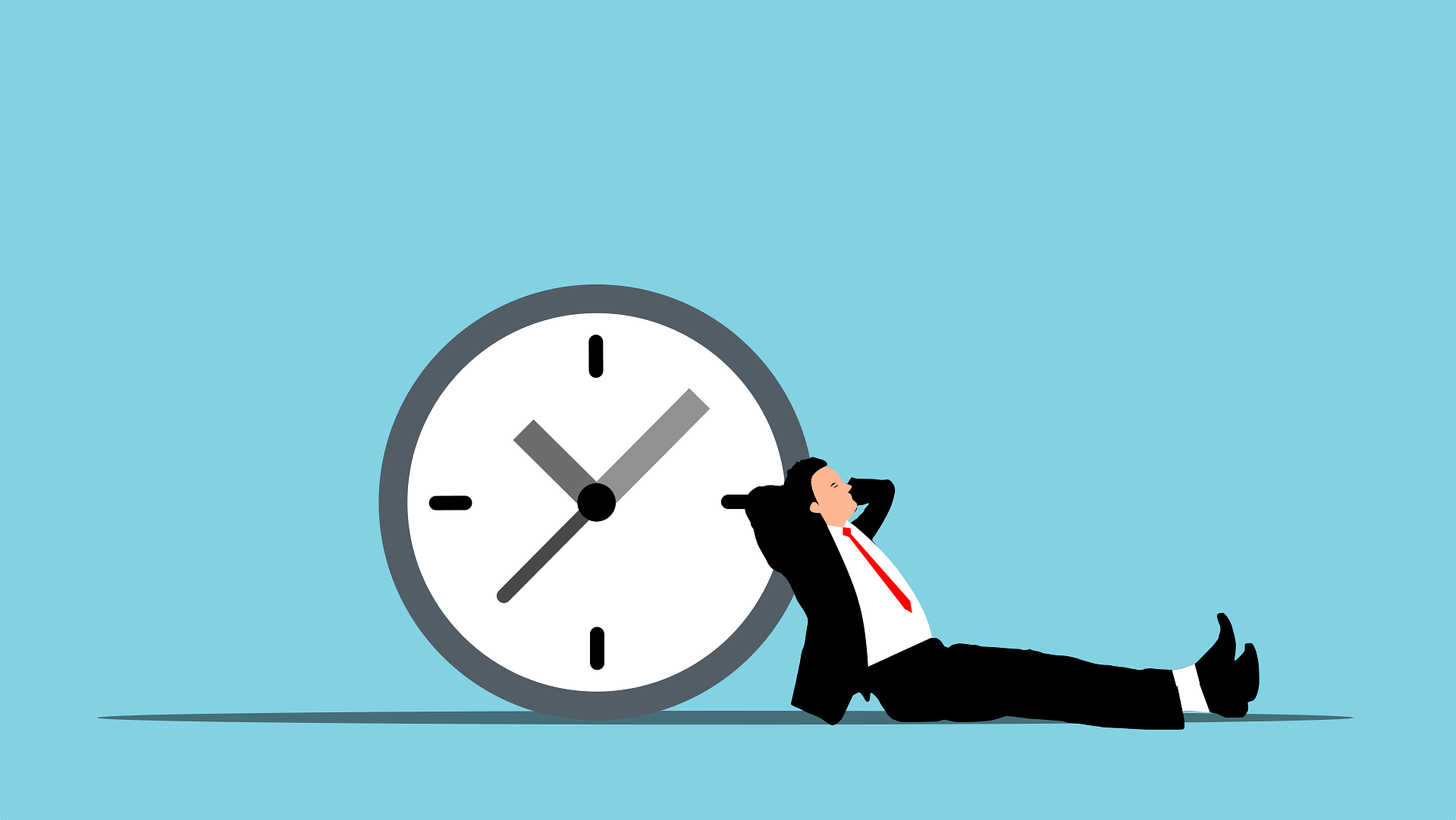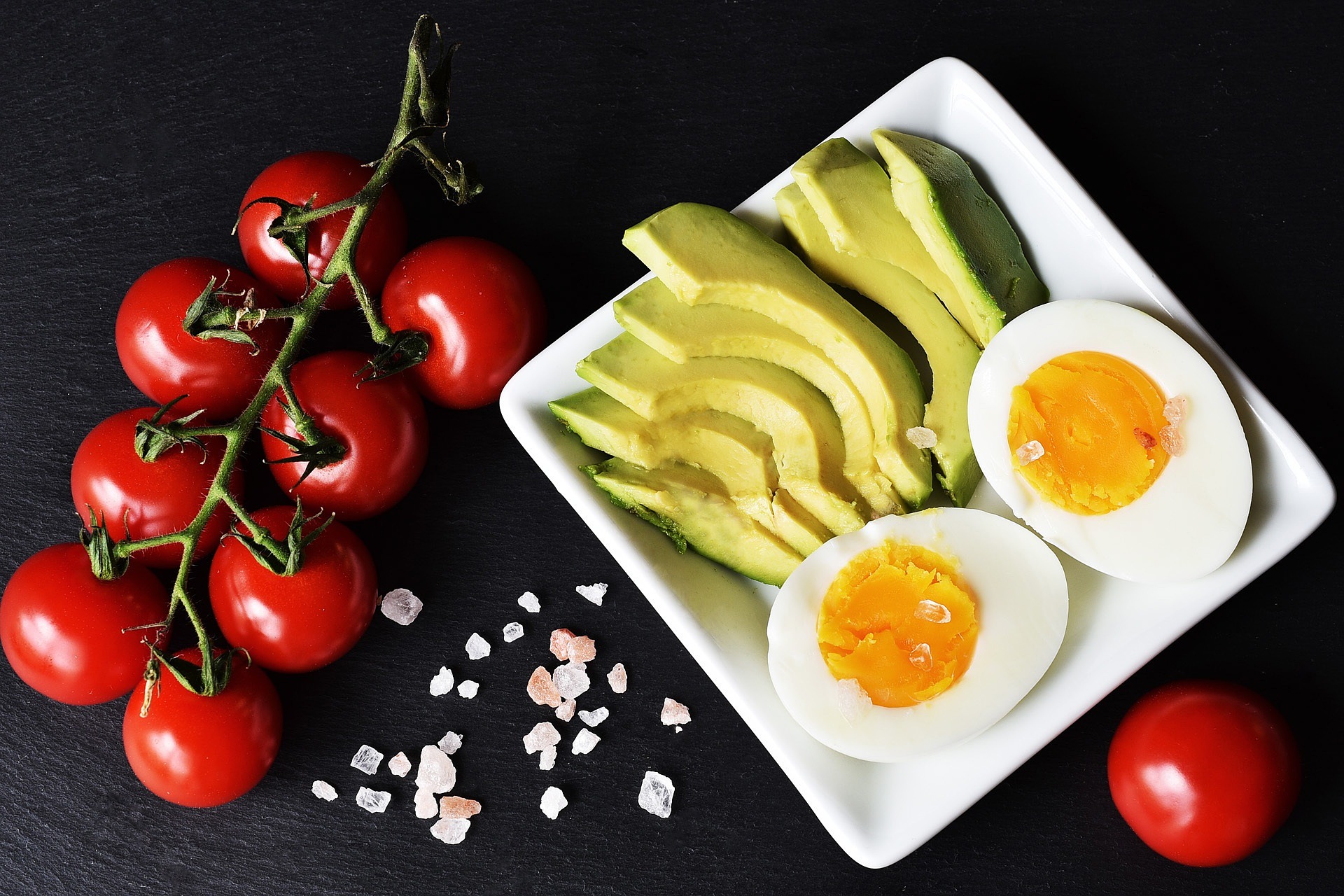3-Bullet Summary
You’ll benefit more from reading the article the whole way through. But, if you’re pressed for time, here’s a condensed version of Environment Design Is the Secret to Effortless Success:
- Most people’s default decision-making is unproductive and doesn’t serve their growth or productivity.
- This is not because they innately make bad choices. Instead, it’s because their environment is designed to set them up for failure off the bat.
- There are 4 principles underlying successful environment design: alignment, elimination, addition and automation.
Left Behind, Again
“Pay attention,” the teacher announces. “This content’s coming up in your exam next month.” he states.
Everyone’s ears perk to attention, like soldiers standing to order. Eyeballs fixate on him as he starts discussing complex theories and concepts.
You start off with a high level of focus. You’re taking effective notes and really concentrating on noting down what he has to say so that you do well on the test.
Suddenly, you feel a slight vibration on the table. It’s your phone.
“What could it be?” your lizard brain asks. “It might be an emergency.”
You hesitate. You know that if you pick up that phone, you’re going to lose focus. But, at the same time, you really want to see what’s going on. You want to pick up the phone and see if a family member’s in danger, although deep down you know that it’s probably just a picture of a friend’s lunch.
It’s the same internal battle you face with junk food, exercise and your sleep schedule: you know what you should do, but you can’t resist the alternative.
You’re thinking really hard now. Your hand literally starts to move towards the phone by itself. Fortunately, you pull it back in time. “No,” you say to yourself. “I’m not touching it.”
You look back up at the teacher and try to reengage. But, something’s wrong.
He’s moved on from the previous slide.
In fact, he looks to be several slides ahead. He’s on a different part of the topic now, meaning you missed out on the previous one.
One notification, one internal battle, and you’re now lost. You don’t know what you’ve missed out on, and there’s now a gap in your knowledge. A gap that you’re now going to have to fill in your own time.
Introduction
If only we weren’t so easily distracted.
See, it’s almost normal easy nowadays to get caught in the distraction trap. We literally own devices that contain apps designed by highly paid software engineers which are specifically made to promote addiction. From the colours we’re shown to the recommendations we receive, everything is made to be intentionally distracting.
Worst of all, we actively encourage them to distract us.
For instance, throughout my secondary school and college years, when I used to study in the evening, I’d listen to music. Although some research has indicated that this isn’t bad for a student’s ability to concentrate1, I found myself getting distracted frequently. Was it the music? Probably not. Was it the fact I was listening to music on a phone? Almost certainly.
I didn’t even realise that I was hurting my own potential. I thought it was normal to have my phone around me at all times.
Then, I discovered what I was missing out on.
Around my last year of sixth form, I was recommended a book called Deep Work. My teacher recommended it to me because the author, Cal Newport, is famous for writing about how to improve as a student.
In the book, he discussed a concept called the Great Restructuring. This basically refers to a shift in the economy. Those who can work creatively and efficiently with machines, as well as masters of their specific crafts and passions, are wildly successful in today’s society.
In the economy of the Great Restructuring, one which is underpinned by skills, he went on to say that deep, uninterrupted focus is necessary. If you can’t perform deep work, then you’re not going to learn fast enough.
Then, it hit me.
By having my phone on whilst I was working, I was limiting the depth of the work I could achieve. I was self-sabotaging my productivity!
That sent me on a mission: to create the best deep work environment imaginable. I wanted to know where else in my life my environment was holding me back, and take actions to redesign it to make me as productive as possible.
As I researched and implemented, I quickly realised that there were so many low-hanging fruits to grab. Almost every day for a week, I found something that I could redesign. From what I was seeing to what I was smelling, there was something that was distracting me.
The results from this experiment? I started getting way more done in less time! The work I was doing became so focused that I cut my weekly study time in half whilst my grades stayed exactly where they were: at the top! Moreover, when I was set homework, I didn’t procrastinate it for weeks on end like I used to, and started completing it in a matter of days. I became much more productive as a result of a few basic changes.
Today, we’re going to cover the science-based system I developed. The environment design blueprint I’m going to walk through will allow you to unlock the benefits I received and reach new heights in your ability to focus.
Before we get to the system, however, it’s essential that we first understand what environment design actually is and the science behind its power. If we do this, then we’ll understand the core principles of successful environment design later in the article.
Environment Design: You Are What You’re Surrounded By
Environment design, according to James Clear, the author of Atomic Habits, is ‘the invisible hand that shapes human behavio[u]r’. By this, he basically means that what we surround ourselves with silently ushers us in certain directions.
Take the story about me from the introduction. I used to surround myself with my phone when I’d study in the evening. Because the phone was part of my environment, it led me to make automatic decisions that impacted my productivity negatively.
Now, imagine instead if I was locked in a room with comfortable lighting, a few plants, a textbook, and a notepad and pen. This environment, contrary to the one with my phone in it, would drive productivity. There are no distractions; it’s just me, my thoughts and the task at hand.
The Science Behind Environment Design
Research reinforces the importance of environment, and has shown that it is strongly connected with the outcomes you experience. A well-designed, productive environment breeds focus and success, whereas a poorly designed environment promotes distraction and failure.
For example, researchers in 2011 examined the impact of in-class mobile phone usage during course lectures on test performance2. The researchers split the sample of 185 students into three groups. One group received no messages, the second group received 4, and the final group received 8. Then, at even intervals throughout a 30-minute lecture, students were sent the appropriate number of messages. Post-test, students who received 8 messages performed worse by a whole letter grade (10.6%) than students who received no messages.
The reason environment design is so important is because it impacts the stimuli we’re exposed to. Stimuli are essentially the triggers that guide the decisions we make. For example, the smell of pastry and sweet jam is a stimulus for the decision to buy doughnuts, which we have associated with deliciousness.
Environments are the precursors to stimuli. This means that they come before them. Leading on from the doughnut example, the environment that led to us to receive the stimulus to crave doughnuts would’ve been the doughnut shop — with all it’s glorious iced rings on display and magnificent smells.
This idea that the stimuli we receive shape our actions is called the stimulus-response theory3.
It essentially shows us that we don’t have as much control over our actions as we think. It is easy to believe that we have agency over our decisions, but, in reality, we’re just apes choosing to do things based on the emotions resulting from environmental triggers. (Demoralising, huh?)
Although it can make you feel a sense of existential powerlessness, stimulus-response theory is actually the core principle behind why environment design is so vital. If we, as humans, act on triggers, then our mission is to make those triggers align with our goals so that we move in the right direction.
In other words, although we don’t have as much control over our decisions as we’d like, we can make it so the decisions working in our favour are automatic.

How Use Environment Design for Focus and Success
You may have been led to think that environment design is this complicated, woo-woo practice. I mean, social media will have you believe so. For example, type ‘environment design’ on Instagram. I’ll wait.
…
I’m going to assume that you saw a picture of someone’s workspace. I’m also going to guess that the workspace you saw was super elegant. It would’ve been perfectly organised, there would’ve been pretty colours, a view of nature would’ve been outside the window, perhaps there was even LED lighting.
Although this version of environment design is cool, we’re going to make it simpler.
Successful environment design is underlain by just [number] key principles that all stem from the stimulus-response theory. We’re now going to go through each of them, study some real-life examples and take away some practical, actionable considerations.
I promise that by the end of this section, you’re going to have some concrete ideas about how to make your environment more productive today.
So, let’s get to it!
Principle 1) Alignment
The first and most important principle is alignment. By alignment, I’m referring to making sure that your environment reflects the outcomes you want to experience.
In The Ultimate Guide on How to Set Goals and Secure Success, we unearthed how to set effective goals and the science behind why goal-setting is so important. We also went over the purpose of setting goals: to guide your actions.
For instance, if you set a goal related to getting an A for your end-of-year mark, then the goal automatically causes you to perform the actions of an A-grade student, such as studying actively, prioritising sleep and exercising. If you fail to embody these actions, then you won’t be able to bring the goal to life.
Because goal-setting offers this guidance, it is the foundation on which all the other principles of environment design are built. Without knowing what you actually want to achieve, how will you know what triggers you want to receive from your environment?
Let’s revisit the example of the student who set themself the target of an A. If they didn’t know what grade they wanted to achieve, then they wouldn’t have reverse engineered the traits of an A-grade student. As a result, they wouldn’t have bothered to set their environment up to promote those traits.
For example, because sleep is so important for achieving good grades — one of the traits they would’ve reverse engineered to achieve their goal — if they didn’t set the intention to get good grades in the first place, then they wouldn’t have cared to design an environment optimal for sleep. They’d leave bright lights on, not remove barriers to keeping their bedroom cool, etc.
Therefore, before even considering the next principle, it is essential that you read The Ultimate Guide on How to Set Goals and Secure Success and reverse engineer the habits you need to be performing to get to your desired endpoint.
A lack of direction = a higher likelihood of going off course.
Principle 2) Elimination
Once you’re clear on the direction in which you’re heading and the actions you must perform to get there, you can make the first alterations to your environment. However, rather than adding stuff in straight away, you’re going to cull all the stuff in your environment that is not conducive of your goals.
The way we’re going to do this is via sensory optimisation.
There are five senses: sound, sight, touch, taste and smell. Each of these senses function as categories that we can remove stuff from to move towards our goals. I recommend heading five columns, one for each of these senses, and listing all the things you could remove from each to promote greater success. The list below gives you a series of prompts:
- Sound
- Are there any unproductive noises around me that will slow my progress down towards achieving my goals? If so, how could I remove them?
- Are my notifications still on whilst I’m working?
- Would some noise-cancelling headphones or ear plugs be a good investment?
- Are there any voices that I regularly hear that are detrimental to my progress?
- Could I relocate to a quieter area if I need peace to be productive?
- Sight
- Can I see anything that impacts my ability to achieve my goals? If so, where could I move the(se) thing(s) so they aren’t visually distracting me?
- Are there people I can see that visually distract me? If so, how could I make it so I don’t see them?
- Because sleep is so vital for my success, could I eliminate blue-light via a pair of blue-light blocking glasses?
- Are my notifications still on whilst I’m trying to be productive?
- Is my phone’s lift-to-wake setting still on?
- Is the content I regularly view detrimental to me?
- Is my screen too bright or not bright enough?
- Could I relocate to an area where nothing is visually distracting?
- Touch
- Is there something distracting that’s within reaching distance?
- What could I remove from my immediate vicinity that would promote faster progress towards my goals?
- Is my phone’s lift-to-wake setting still on?
- Could I relocate to an area where there are no distractions that I could touch?
- Taste
- Is there anything in the space in which I’m working that I could eat or drink right now that would be counterproductive to my goals? If so, then why are they here and do they need to be here?
- Are there any foods or drinks I should eliminate from my life, gradually filter out, or eat less of?
- Could I relocate to an area where food and drink cannot derail my progress?
- Smell
- Are there any unproductive smells around me that I need to deal with?
- Could I purchase an air purifier to remove bad smells?
- Could I relocate to an area where smells do not hinder the pursuit of my goals?
You could be the best hiker in the world, but if you’ve got chains strapped to your ankles, you’ll get beaten by grandma. Likewise, if you have all the things you need in your environment to be successful as well as loads of stuff that’s going to hold you back, you’re fighting an uphill battle.
By removing things from your environment first, you eliminate the negative forces holding you back from achieving your goals. This practice of minimalism not only creates a nice blank canvas for you to add productive stuff to, but has also been proven to facilitate positivity, competence and the opening of mental space (i.e., clarity)4.
So, before progressing to Principle 3, get eliminating!
Principle 3) Addition
You now have a clear idea about what needs removing from your environment. Once these things are actually removed, you’re environment will contain the things that are necessary for you to move towards your goals.
If you’ve got everything that you need, then you can skip this principle. The less clutter in your environment, the less you have to focus on, and, therefore, that can derail your progress.
If, however, you’ve practically got nothing left or you feel like you need more things to achieve your goals, then you’re going to do the same activity as before, but in reverse. This means that you’re going to head five columns pertaining each of the senses, and list all the things you could add to each to promote greater success. The list below gives you a series of prompts:
- Sound
- What could I hear that would drive me towards my goals?
- Which voices could I hear more of that would be better for me in the long run?
- Research has shown that natural sounds actually promote better cognitive performance5. Could I perform my mental activities somewhere where all I can hear is gentle, natural sounds?
- Would some noise-cancelling headphones or ear plugs be a good investment?
- In the places I feel like doing unproductive stuff in, what could I add that I could hear that would make me more productive?
- Sight
- What could I see that would make achieving my goals easier? For instance, if I want to get in shape with resistance training, could I leave my gym bag in plain sight by the front door?
- What content could I consume more of that would be better for me in the long run?
- Could I display my habit tracker and calendar in a place that’s more visible?
- If I work well with people, which people would I like to see around me? If so, how could I make it so I see them more often?
- Because sleep is so vital for my success, could purchase a pair of blue-light blocking glasses?
- In the places I feel like doing unproductive stuff in, what could I add that I could easily view that would make me more productive?
- Touch
- What could I place in close proximity to me that would drive me towards my goals? For instance, if I wanted to gain weight to build muscle, could I place some dried fruit or nuts on my desk to snack on whilst working?
- In the places I feel like doing unproductive stuff in, what could I add that I could touch that would make me more productive?
- Taste
- What foods and drinks could I add to my life that would allow me to achieve my goals faster?
- Could I swap out the foods and drinks that are anti-progress for alternatives that I also enjoy and which are more conducive of my goals?
- In the environments in my life that cause me to eat poorly, could I add foods and drinks to it that would counteract this effect?
- Smell
- What could I smell that would make achieving my goals easier? For instance, if I’m trying to lose bodyfat by maintaining a calorie deficit, could I start smelling minty or fresh smells rather than those of food?
- Are there smells that I could consume more of that would energise me?
- In the places I feel like doing unproductive stuff in, what could I smell that would make me more productive?
Adding productive things to your life will really help you to achieve your goals. They’re essentially the fuel to your progress fire.
However, before moving to the final principle, a quick caveat.
Inevitably, addition requires some sort of cost. For example, if you believe that having access to easily viewable and usable gym equipment would move you towards your goals, then you’re going to have to buy a gym membership or create your own home gym. This costs money.
However, instead of viewing this as a price to pay, view it as a trade. You’re exchanging money for something that will lead you in the right direction if you’re consistent with it. Moreover, it may lead you to more money in the future, as well as more satisfaction, better health, etc.
Don’t be afraid to invest in adding things to your life that will move you towards your goals faster. In particular, don’t be afraid to buy things that facilitate the final principle…
Principle 4) Automation
Automation refers to making the habits we need to do to make progress to our goals opt-outs vs opt-ins.
You may think that this won’t make much of a difference. But, you’d be shocked at how powerful the difference in your productivity is if you have to say ‘no’ rather than ‘yes’. In fact, scientific research has shown that by binding yourself to a contract and making it so you have to opt-out of something you set out to do, you majorly increase the likelihood that you’ll do that thing.
For instance, one study reviewed six other studies that looked at the impact of opting in vs
opting out on organ donation rates. The researchers found that organ donation increased by up to 76% in countries that made people have to opt-out of organ donation in comparison to countries in which people had to opt-in to donate6.
What this study essentially shows is that we live according to our defaults. Automatic things require less effort, so we tend to do them more.
As a result, we need to configure our environments so they make our defaults — behaviours and habits we have to opt-out of doing — things that are beneficial for achieving our goals.
How to Automate Habits Through Environment Design
When automating decisions through environment, there are two main strategies you can use: barriers and boldening. Both centre around making your defaults productive.
When I use a barrier strategy, I make something that’s unproductive harder to do. For example, because I know my phone will distract me whilst I work, I either…
- Turn it off and leave it in a different room.
- Put it on airplane mode if it’s turned on.
Both strategies make using my phone whilst I work effortful because I have to opt-in to use it. Automatically, therefore, my default is to not use my phone whilst I’m working.
If you followed Principle 2, then you shouldn’t have many barriers to erect because most of the distracting bad stuff in your life should be gone. However, we’re all human. There will always be things we know are bad for us but we won’t remove from our lives for whatever reason. (Cough… Rocky road in the fridge… Cough…)
Therefore, I recommend raising barriers in front of any remaining habits in your life that aren’t positive influences on your goals. Once you’ve done this, it’s time to start boldening.
A boldening strategy is the opposite of a barrier strategy. When you bolden text, you signpost it and make it easier to read. Likewise, if you bolden a habit that’s beneficial for your goals, you’re making it stand out, and, therefore, an opt-out.
I do this for hydration. Because I do deep work for more than two hours at a time, I often get dehydrated if I don’t have water literally right in front of me. Hence, before I sit down to work, I always fill up my water bottle and put it on my desk with my laptop. This causes drinking water to be my default behaviour, because the water bottle is literally right there in front of me.
If you’re stuck on what to bolden in your life, the answer is actually quite simple. Just bolden the things you added to your life for Principle 3, or the things associated with the completion of the most important habits in your life.
For example, say you decided that you need to see and touch more textbooks and revision notes if you are to achieve your goal of getting an A grade. To bolden your textbooks and revision resources, make them more visible. Put them on your desk, or next to the chair you sit in. Leave copies of them in the kitchen and bathroom. By flooding your environment with studying resources, this makes the default behaviour in your life studying.
Likewise, if you want to make the resistance training workouts you scheduled in your weekly timetable more automatic, try packing your gym bag the night before and leaving it beside your bed. That way, when you wake up, you’re packed and ready to go to the gym.
When you start boldening good habits and raising barriers in front of any remaining bad ones, you’ll quickly find that your environment starts generating stimuli that are actually good for you. Consequently, hard work and healthy habits will become your default opt-outs, meaning you’ll willingly do them and reap the fruits they have to offer in the long run.
Final Thoughts: Environment Design Is the Secret to Effortless Success
Most people operate in environments that aren’t a positive influence on their lives. They work with their phones on, leave junk food in the house, and make the process of exercising an actual exercise.
Unsurprisingly, many people don’t end up achieving extraordinary things.
Nevertheless, this article on environment design has illustrated how a few basic principles can actually yield significant behavioural changes.
By aligning, eliminating, adding and automating, anyone can make their default operating system one that actually works in their favour. It doesn’t cost a dime to put your phone on airplane mode and disable lift to wake, and it takes mere seconds to go on Amazon and purchase some blue-light blocking glasses that will improve your sleep, and, as a result, all other areas of your life!
So, if you take the science-based advice we’ve been through today and change just one thing in your life, then your productivity will see an improvement. If you ignore it and don’t take any action, then your environment will continue to provide signals that are preventing you from reaching your true potential.
Why not hold yourself accountable? Hit one of the buttons below, share this post with a friend or family member, and tell them one thing in your environment that you’re going to change to drive you towards your goals.
Remember, you are the product of your actions. If those actions are built on a foundation of negative environmental triggers, then your life is going to be representative of all the bad things you’re doing.
Stop capping your growth; design a healthy, productive environment.
Stay strong,
Sam.
Founder, Strong Students.
(P.S., if you got some value from this article, then you’ll be gobsmacked at the value you’ll get from The 10 Secrets of Strong Students eBook. It’s free, so you’ve got nothing to lose.)









